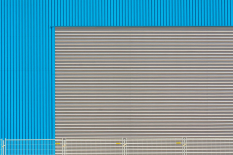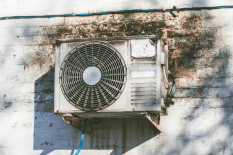A terracotta Spanish-style kitchen isn’t just about design—it’s about creating a space that feels warm, timeless, and full of character. With its rich earthy tones and rustic charm, this style transforms the kitchen into a cozy retreat.
But what makes this look so inviting? It’s the handcrafted details, natural textures, and the perfect blend of old-world elegance with modern comfort. From terracotta tiles and wooden beams to wrought iron accents, every element adds warmth and authenticity.
In this article, we’ll explore the key features of a terracotta Spanish-style kitchen, design tips to bring this aesthetic to life, and how to create a space that feels both classic and welcoming.
Terracotta: The Heart of the Spanish Kitchen
Terracotta is the soul of a Spanish-style kitchen, bringing warmth, texture, and authenticity to the space. More than just a design choice, terracotta is a natural, durable material that has been used for centuries in Mediterranean homes. Its earthy tones and handcrafted feel create a welcoming atmosphere, making the kitchen a place of comfort and character.
Flooring That Tells a Story
Terracotta tiles are strong, rustic, and full of history. Each tile has a unique texture and color variation, adding depth and personality to the kitchen. Over time, terracotta flooring develops a natural patina, giving it an aged and timeless look. It’s also highly durable and can withstand daily wear, making it an excellent choice for busy kitchens.
Backsplash with Character
A terracotta backsplash brings warmth and charm to the kitchen while showcasing traditional Spanish artistry. Hand-painted tiles, often featuring intricate patterns and rich colors, add a decorative touch and create a focal point behind the stove or sink. Whether in matte, glazed, or textured finishes, a terracotta backsplash enhances the space’s rustic elegance.
Countertops That Stand Out
Terracotta countertops offer a handcrafted, natural look that blends beautifully with wood and stone elements. Unlike modern polished surfaces, terracotta has a soft, organic texture that makes the kitchen feel warm and inviting. It also has a natural cooling effect, which is useful in warmer climates. Proper sealing ensures durability, making it both a practical and stylish choice.
From the floor to the walls and countertops, terracotta ties the Spanish kitchen together, creating a space that is both functional and full of character. Its ability to age gracefully and its deep connection to traditional craftsmanship make it a defining feature of this timeless kitchen style.
Bringing the Spanish Aesthetic to Life

A Spanish-style kitchen is all about warmth, texture, and a rich blend of natural materials. Terracotta plays a key role, but to truly bring this aesthetic to life, you need the right color palette, materials, and finishes. From deep, earthy tones to handcrafted textures, every element works together to create an inviting and timeless space.
Warm & Earthy Color Palette
The foundation of a Spanish kitchen is its warm and natural color scheme. Terracotta’s signature burnt-orange hue pairs beautifully with the following:
- Deep Reds – Adds richness and depth, often seen in traditional Spanish tiles and accents.
- Golden Yellows – Reflects Mediterranean sunshine, creating a cozy and welcoming feel.
- Rustic Browns – Brings an organic, grounded touch, complementing wooden elements.
- Olive Greens & Cobalt Blues – Used as accent colors in tiles, dishware, or textiles to add contrast and vibrancy.
Combining these hues, you create a space that feels warm, inviting, and full of life, much like the kitchens found in traditional Spanish homes.
Textures That Speak
One of the defining features of a Spanish-style kitchen is the use of rich, tactile materials that add depth and character. To achieve this look, mix the following elements:
- Rough-Hewn Wood – Used for beams, cabinets, and open shelving, aged or distressed wood adds rustic charm.
- Hand-Painted Tiles – A classic Spanish touch featuring intricate designs and vibrant colors for backsplashes or decorative accents.
- Wrought Iron – Seen in cabinet handles, light fixtures, and pot racks, wrought iron enhances the old-world feel.
- Clay & Stone Accents – From terracotta pots to stone countertops, these natural materials reinforce the Mediterranean aesthetic.
Blending these textures ensures your kitchen feels authentic, lived-in, and full of character rather than overly polished or modern.
Glazed vs. Matte Terracotta: Choosing the Right Finish
Terracotta is available in different finishes, and the choice between glazed and matte depends on the look and functionality you want:
- Matte Terracotta – Has a raw, natural appearance that enhances the rustic feel of the kitchen. It is ideal for flooring and walls but requires proper sealing to prevent stains.
- Glazed Terracotta – Has a smooth, glossy surface that adds a refined touch while making the material easier to clean. Best for backsplashes, countertops, or decorative tiles.
If you want an authentic, old-world charm, matte terracotta is the way to go. If you prefer a polished, easy-to-maintain finish, glazed terracotta is a great option.
By carefully selecting the right colors, textures, and finishes, you can bring the Spanish aesthetic to life in your kitchen, creating a space that is both beautiful and functional.
Architectural Features That Define the Look
A Spanish-style kitchen is more than warm colors and rustic materials—it’s the architectural details that truly bring the design to life. From elegant arches to exposed wooden beams and intricate tilework, these features create a timeless, old-world charm that makes the space feel authentic and inviting.
Arched Doorways & Windows – A Must-Have Spanish Design Element
One of the most recognizable elements of Spanish architecture is the use of arched doorways and windows. These rounded shapes soften the space, creating a natural flow between rooms while adding elegance and sophistication.
- Doorways – Instead of traditional rectangular openings, opt for gentle arches that frame the kitchen and connect it seamlessly to other living areas.
- Windows—Arched windows enhance the look and allow more natural light to flood the kitchen, making it feel open and airy.
- Cabinet Nooks & Alcoves – Small arched recesses in walls can serve as stylish storage spaces or decorative niches for displaying pottery or spices.
By incorporating arches, you immediately capture the essence of Spanish design, giving your kitchen a distinctive, Mediterranean-inspired feel.
Exposed Wooden Beams – Bringing Warmth and Old-World Charm
Nothing adds warmth and authenticity to a Spanish-style kitchen like exposed wooden beams. Traditionally used in historic Spanish homes, these beams bring in a rustic touch that pairs beautifully with terracotta flooring and handcrafted tiles.
- Ceiling Beams – Thick, dark-stained beams against a white or textured ceiling create a dramatic contrast, enhancing the kitchen’s depth and character.
- Open Shelving Support – Instead of using metal brackets, incorporate wooden corbels or small exposed beams to support open kitchen shelves.
- Mantels & Range Hoods – A wooden beam above the stove or range hood mimics the look of an old-world fireplace, adding to the kitchen’s charm.
For an even more authentic feel, choose distressed or reclaimed wood, which highlights natural imperfections, making the kitchen look well-loved and full of history.
Spanish Tile Accents – Where to Use Them for the Biggest Impact
Hand-painted Spanish tiles are an essential design element, adding color, pattern, and craftsmanship to the kitchen. These intricate tiles often feature floral, geometric, or Moorish-inspired designs in deep blues, vibrant yellows, and earthy reds.
Here’s where they make the biggest impact:
- Backsplash – A tile backsplash behind the stove or sink serves as a striking focal point while protecting the walls from spills.
- Counter Edges & Islands – Adding a row of decorative tiles along the edge of a countertop or island enhances the rustic appeal.
- Floor Borders – Instead of covering the entire floor, use Spanish tiles as a border around terracotta flooring for a stylish accent.
- Stair Risers & Wall Niches – If your kitchen connects to a dining or outdoor space, consider adding Spanish tile risers on staircases or in small wall alcoves.
Thoughtfully placing arched elements, wooden beams, and decorative tiles, you create a cohesive and visually stunning Spanish-style kitchen that feels both elegant and inviting.
Furniture & Cabinetry: Rustic, Yet Elegant

A Spanish-style kitchen is all about warmth, tradition, and craftsmanship. The furniture and cabinetry play a key role in creating this atmosphere, using natural wood, hand-carved details, and decorative tile accents. Choosing the right materials and designs helps achieve the perfect balance between rustic charm and timeless elegance.
Wood Choices That Work
The foundation of Spanish kitchen furniture and cabinetry lies in the use of rich, natural woods. Distressed oak is a popular choice, giving cabinets and furniture an aged, well-worn look that feels authentic. Mahogany, with its deep reddish-brown tones, adds a touch of sophistication, while walnut and alder provide a softer grain that blends well with traditional Spanish decor. Reclaimed wood is another excellent option, bringing both character and sustainability to the kitchen. Many Spanish kitchens feature wooden cabinets with hand-carved details, decorative molding, and iron hardware, all of which enhance the old-world appeal.
Open Shelving vs. Classic Cabinets
Both open shelving and classic cabinets work well in a Spanish-style kitchen, and the choice depends on the desired balance between function and aesthetics. Open shelving allows for the display of colorful dishware, handmade ceramics, and clay pots, creating a more inviting and decorative look. Thick wooden shelves supported by wrought iron brackets add to the rustic charm. Traditional cabinets, on the other hand, provide ample storage while maintaining the warm and cohesive feel of Spanish design. Cabinets with glass panel doors offer a middle ground, allowing for the display of dishware while keeping dust away. Many Spanish kitchens blend both styles, using open shelves for frequently used items and closed cabinets for storage.
Hand-Painted Tile Inlays: A Small Detail That Makes a Big Statement
Decorative hand-painted tiles are a signature feature of Spanish kitchens, adding color, texture, and artistry. These intricate tiles can be incorporated into cabinetry and furniture in creative ways. A row of hand-painted tiles along the base of a kitchen island or on the edge of a countertop enhances the Mediterranean feel. Cabinet doors and drawer fronts with small tile inlays add personality and a handcrafted touch. Even dining tables and buffets can feature tiled surfaces or accents, making them unique statement pieces within the space.
Lighting & Decor: The Final Touches
The right lighting and décor bring a Spanish-style kitchen to life, creating an inviting and warm atmosphere. Traditional Spanish homes embrace handcrafted details, earthy materials, and rich textures, all of which play a role in making the space feel authentic. From wrought iron light fixtures to hand-painted pottery and woven textiles, each element adds depth and character.
Wrought Iron Fixtures: A Signature Element
Lighting in a Spanish-style kitchen isn’t just functional—it’s an essential design feature. Wrought iron chandeliers, pendant lights, and wall sconces provide a rustic elegance that complements the terracotta tones and wooden elements of the space. These fixtures often have curved, intricate designs that reflect classic Spanish craftsmanship.
A large wrought iron chandelier hanging over a kitchen island or dining table serves as a striking focal point. Pendant lights with iron detailing and frosted or amber glass shades work well over counters and prep areas, adding both warmth and practicality. Wall sconces with decorative scrollwork contribute to the old-world charm, offering soft, ambient lighting that enhances the cozy atmosphere.
Spanish Pottery & Earthenware: Authentic Decorative Elements
No Spanish-style kitchen is complete without the rich textures and vibrant colors of traditional pottery. Handcrafted ceramics and earthenware bring both function and beauty to the space.
Hand-painted plates and bowls with intricate patterns in blue, yellow, and red can be displayed on open shelves or wall-mounted racks. Terracotta vases and pitchers add a rustic touch, whether used as decorative pieces or to hold fresh herbs and flowers. Large clay pots and jars serve as stylish storage solutions for kitchen essentials like utensils, garlic, or dried chili peppers.
Decorative tiles can also be incorporated beyond the backsplash—framing a mirror, bordering a kitchen island, or even used as coasters and trivets. These details reinforce the traditional Spanish aesthetic, making the kitchen feel truly immersive.
Textured Fabrics & Accessories: Softening the Look
While Spanish kitchens are often defined by their stone, wood, and tile surfaces, soft textiles bring balance and warmth to the design. Natural fabrics like linen, cotton, and wool add layers of comfort and texture.
Linen curtains or Roman shades in neutral tones or earthy hues soften the windows while allowing natural light to filter through. Handwoven baskets provide both storage and decoration, ideal for holding fruits, bread, or kitchen towels. Rugs with traditional Spanish patterns introduce color and texture underfoot, especially in areas where you stand for long periods, like near the sink or stove.
Throw pillows on built-in breakfast nooks or wooden benches to add an extra layer of coziness. Even small details like embroidered dish towels and decorative table runners can enhance the overall look, tying the space together beautifully.
Balancing Tradition with Modern Comfort
A Spanish-style kitchen is all about old-world charm, but that doesn’t mean you have to sacrifice modern convenience. With the right approach, you can blend rustic aesthetics with contemporary functionality, ensuring your kitchen is both beautiful and practical. The key is to choose appliances, storage solutions, and materials that enhance the traditional look while offering modern ease.
Blending Old-World Aesthetics with Modern Appliances
While modern appliances are essential in today’s kitchens, they can sometimes look out of place in a Spanish-style design. The trick is to integrate them without disrupting the rustic charm.
For large appliances like refrigerators and dishwashers, consider paneling them with custom wood covers that match the cabinetry. This allows them to blend seamlessly with the traditional elements. If you prefer stainless steel, opt for brushed or antique finishes rather than high-shine surfaces to keep the look more understated.
Ovens and stovetops can become focal points rather than eyesores. Many Spanish kitchens feature large, decorative range hoods made of plaster, copper, or wood, often with hand-painted tile accents. This helps modern ranges feel like part of old-world design.
For small appliances like microwaves, coffee makers, and toasters, consider built-in solutions or tuck them inside cabinets to keep countertops uncluttered.
Smart Storage Solutions That Maintain the Rustic Look
Storage in a Spanish-style kitchen should be both practical and visually appealing. Instead of sleek, modern cabinets, opt for open shelving made of reclaimed wood or traditional wooden cabinetry with iron handles. This keeps everything accessible while maintaining the cozy, lived-in feel.
To keep the space organized without compromising style, use woven baskets, ceramic jars, and hand-carved wooden containers for storing dry goods, utensils, and kitchen essentials. Pull-out spice racks, hidden drawers, and built-in pantry shelves offer extra storage without disrupting the traditional design.
For an authentic touch, hanging pot racks made of wrought iron are both functional and decorative, keeping cookware within easy reach while adding to the rustic aesthetic.
Choosing the Right Mix of Modern Convenience and Classic Design
The goal is to create a kitchen that feels timeless but works effortlessly for modern living. When selecting countertops, materials like soapstone, granite, or butcher block offer durability while complementing the Spanish style. Quartz with a matte finish is also a great option if you want something low-maintenance that still looks natural.
Flooring should balance beauty and practicality. Terracotta tiles are a staple in Spanish kitchens, but they can be sealed for easier cleaning and maintenance. If you prefer a more durable option, wood-look porcelain tiles offer the same warm, rustic look with added durability.
Lighting should combine classic Spanish elements with modern efficiency. Wrought iron chandeliers and pendant lights provide the traditional aesthetic, while LED bulbs ensure energy efficiency. Dimmable lighting adds versatility, allowing you to switch between bright task lighting and warm ambient glow as needed.
Caring for Your Terracotta Kitchen

Regular cleaning is key to preventing dirt buildup. Sweeping or vacuuming daily helps remove dust and debris that can scratch the surface. For countertops and backsplashes, a soft cloth or sponge with warm water works best. When deeper cleaning is needed, a mild soap solution and a soft-bristled brush will remove grime without damaging the tiles. It’s important to avoid acidic cleaners like vinegar or lemon, as they can wear down the surface.
Because terracotta absorbs moisture, sealing is essential to protect against stains and wear. There are different types of sealers available. Penetrating sealers soak into the tile to protect it while keeping the natural matte finish, while surface sealers create a barrier that enhances the tile’s color. For extra protection, wax finishes can be applied, particularly on floors, but they require regular reapplication. High-traffic areas like floors and countertops should be resealed every one to two years, while backsplashes and less-used surfaces may only need sealing every three to five years.
Small habits make a big difference in ensuring long-term preservation. Placing rugs or mats in high-traffic areas, such as near the sink or stove, will protect the floor from wear. Spills should be wiped up immediately to prevent staining, and only pH-neutral cleaners should be used to avoid discoloration. If the tiles have a wax finish, applying a thin layer of wax every few months will help maintain their luster.
With the right care, a terracotta Spanish-style kitchen remains timeless, warm, and inviting for generations.
Conclusion
A terracotta Spanish-style kitchen blends tradition, warmth, and elegance, creating a timeless and inviting space. With earthy tones, handcrafted details, and rustic textures, it brings a unique charm to your home. From terracotta tiles and exposed wooden beams to wrought iron fixtures and hand-painted tiles, every element adds depth and character.
To personalize your space, mix natural materials like stone and wood, incorporate vintage décor, and use warm color palettes for an authentic feel. Start with key elements—flooring, cabinetry, and lighting—then add accessories to enhance the charm.
















